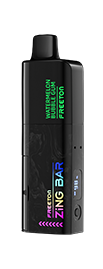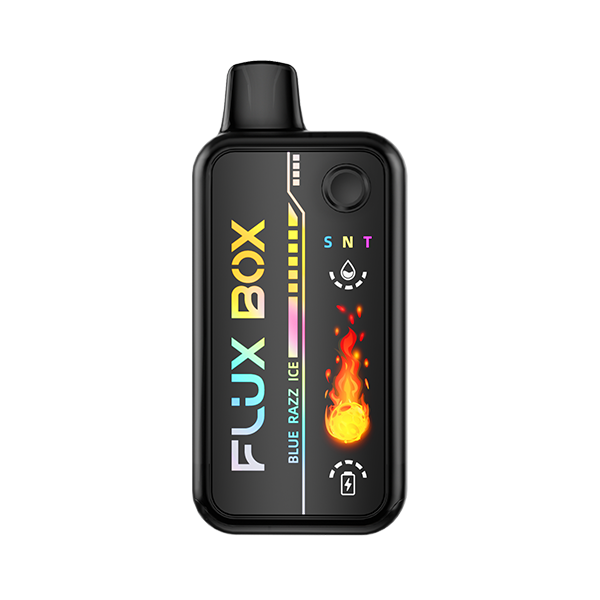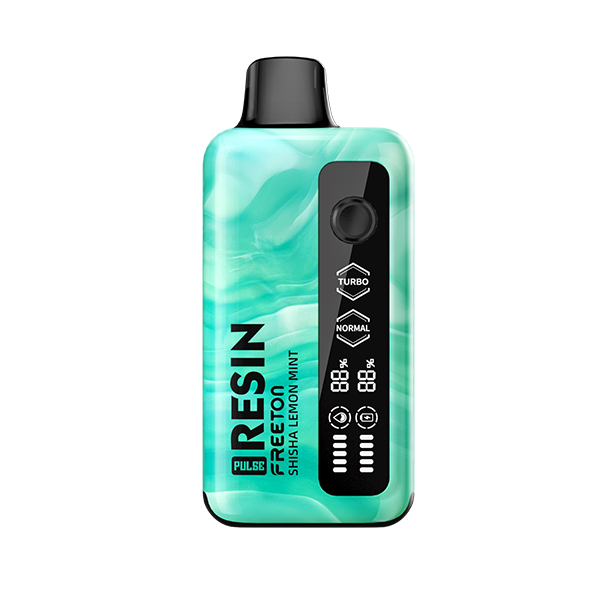
With the increasing popularity of disposable electronic cigarettes in Europe, there is a growing concern about their environmental impact. As the demand for these convenient vaping devices rises, it becomes crucial to examine the potential environmental implications of their usage and disposal. This guide delves into the various aspects of disposable electronic cigarettes and their […]
With the increasing popularity of disposable electronic cigarettes in Europe, there is a growing concern about their environmental impact. As the demand for these convenient vaping devices rises, it becomes crucial to examine the potential environmental implications of their usage and disposal. This guide delves into the various aspects of disposable electronic cigarettes and their impact on the environment, aiming to shed light on the subject and encourage responsible choices.
Understanding the Components
Disposable electronic cigarettes consist of various materials and components that contribute to their functionality. These typically include a battery, an atomizer, a heating element, a cartridge or pod, and e-liquid. The materials used in these components can vary, with plastics, metals, and other substances being common.
The environmental implications of these components arise throughout their lifecycle. The production and extraction of materials, such as plastics and metals, have associated environmental costs. Additionally, the disposal of these components after use can contribute to waste accumulation and potential pollution.
It is essential to assess the environmental impact of the materials and components used in disposable electronic cigarettes to understand their overall sustainability.

Disposal Practices and Waste Management
Proper disposal practices for disposable electronic cigarettes are crucial for minimizing their environmental impact. Unfortunately, the current disposal practices often fall short, leading to potential consequences.
Improper disposal, such as throwing used devices in regular waste bins, contributes to landfill waste and the release of hazardous substances into the environment. Many disposable electronic cigarettes contain batteries that can leach harmful chemicals if not handled correctly.
Furthermore, the small size and convenience of disposable electronic cigarettes can lead to careless disposal habits among users. Addressing the challenges associated with proper disposal requires education, accessible recycling options, and effective waste management systems.
Recycling and Sustainability Efforts
Recycling programs for disposable electronic cigarettes have emerged as a potential solution to mitigate their environmental impact. Some manufacturers and retailers offer recycling initiatives to encourage proper disposal and recycling of these devices.
The effectiveness and accessibility of recycling options, however, vary across regions. Limited recycling facilities and lack of awareness among users can hinder the success of these programs. Increased collaboration among manufacturers, retailers, and recycling facilities is necessary to improve accessibility and ensure that recycling efforts are viable and efficient.
Sustainable practices and initiatives within the vaping industry are also essential for reducing the environmental footprint of disposable electronic cigarettes. This includes exploring sustainable materials for device components, promoting eco-friendly packaging, and supporting research and development for environmentally conscious alternatives.
Environmental Benefits Compared to Traditional Cigarettes
When evaluating the environmental impact of disposable electronic cigarettes, it is important to compare them to traditional cigarettes. Traditional cigarettes have well-documented negative effects on the environment, including air pollution, littering, and deforestation.
In comparison, disposable electronic cigarettes can potentially offer certain environmental benefits. They do not produce the same level of air pollution, as there is no combustion involved. Moreover, they do not generate ash or cigarette butts, reducing litter and the associated environmental hazards.
While disposable electronic cigarettes have their own environmental challenges, transitioning from traditional cigarettes to disposable electronic cigarettes can have a positive impact on air quality and waste generation.
Potential Drawbacks and Areas for Improvement
Despite potential environmental benefits, disposable electronic cigarettes still have drawbacks and areas for improvement regarding their impact on the environment.
One of the main concerns is the sheer volume of waste generated by the disposability aspect of these devices. The single-use nature of disposable electronic cigarettes leads to a continuous cycle of waste generation if proper disposal and recycling practices are not in place.
To address this issue, efforts should focus on reducing waste through innovative design, promoting recyclability of components, and exploring sustainable alternatives to current materials. Manufacturers can play a significant role by adopting more sustainable practices and supporting research into environmentally conscious solutions.
Reducing waste is a crucial aspect that requires attention. Manufacturers can explore ways to minimize the use of non-recyclable materials in disposable electronic cigarettes, opting for more sustainable alternatives. This includes using biodegradable or compostable materials for device components, such as cartridges or pods, and packaging.
Promoting recyclability is another avenue for improving the environmental friendliness of disposable electronic cigarettes. Manufacturers can design devices with easily separable components, allowing for efficient recycling. Collaborating with recycling facilities and implementing collection programs can facilitate the proper recycling of these devices. Ensuring the accessibility of recycling options, such as drop-off points or mail-back programs, is essential to encourage users to participate in the recycling process.
Innovative solutions and industry initiatives are also key to reducing the environmental impact of disposable electronic cigarettes. Research and development efforts can focus on developing new materials and technologies that enhance sustainability. For instance, exploring reusable or refillable options that reduce the overall waste generated by disposable electronic cigarettes can be a promising direction.
Industry collaborations and partnerships are vital in driving these improvements. Manufacturers, retailers, recycling facilities, and regulatory bodies can work together to establish standards and guidelines that promote sustainability in the production, usage, and disposal of disposable electronic cigarettes. This includes sharing best practices, supporting research, and fostering innovation to collectively minimize the environmental footprint of these devices.
Consumer Responsibility and Education
Consumer responsibility plays a crucial role in reducing the environmental impact of disposable electronic cigarettes. Educating users about proper disposal practices is essential to ensure that devices end up in appropriate recycling channels. Clear instructions and messaging on product packaging can help raise awareness and guide users towards responsible disposal.
Additionally, users can take steps to minimize their own environmental footprint. This includes participating in recycling programs, properly disposing of used devices, and considering reusable or refillable options instead of solely relying on disposables. By making informed choices and prioritizing sustainable practices, consumers can contribute to a more environmentally friendly vaping experience.
Public education and awareness campaigns are key in promoting responsible usage and disposal habits. By disseminating information about the environmental impact of disposable electronic cigarettes and providing guidance on eco-friendly alternatives, individuals can make conscious decisions that align with their values and contribute to a greener future.
Regulatory Measures and Industry Standards
Regulatory measures and industry standards play a crucial role in addressing the environmental impact of disposable electronic cigarettes. Government agencies and regulatory bodies can establish guidelines that require manufacturers to comply with specific sustainability requirements. These regulations may include provisions for the use of recyclable materials, proper labeling of recycling information, and the implementation of take-back programs.
Enforcement of these regulations is essential to ensure compliance across the industry. Regular inspections, audits, and penalties for non-compliance can motivate manufacturers to prioritize environmental considerations in their product design and disposal practices.
Moreover, industry collaboration is crucial for the development and adoption of sustainable practices. Associations and organizations within the vaping industry can work collectively to establish voluntary standards and certifications that promote environmentally friendly manufacturing and disposal processes. This collaboration can foster knowledge sharing, innovation, and continuous improvement in sustainability practices.

Future Prospects and Innovations
The future holds promising prospects for improving the environmental friendliness of disposable electronic cigarettes. Emerging technologies, sustainable materials, and recycling advancements are areas that can drive positive change.
Researchers and innovators are exploring alternative materials, such as plant-based plastics or biodegradable compounds, that could replace non-recyclable components in disposable electronic cigarettes. These advancements can significantly reduce the environmental impact of these devices.
Advancements in recycling technologies are also on the horizon. Innovations in sorting and processing methods can enhance the efficiency and effectiveness of recycling programs for disposable electronic cigarettes. This can streamline the recycling process and encourage broader participation.
Research and development efforts should continue to focus on sustainable practices, materials, and technologies. Collaboration among manufacturers, researchers, and environmental organizations can facilitate the development of innovative solutions. This may include exploring concepts like refillable or rechargeable disposable electronic cigarettes, which would reduce waste and promote long-term sustainability.
Additionally, advancements in recycling infrastructure and collection systems can make recycling options more accessible and convenient for consumers. Improved sorting and processing techniques can enhance the efficiency of recycling processes, allowing for better recovery of valuable materials and reducing overall environmental impact.
Investment in research and development is crucial to drive the future of environmentally friendly disposable electronic cigarettes. This includes studying the environmental impact of different materials, optimizing recycling processes, and exploring new sustainable technologies. By embracing these advancements, the vaping industry can contribute to a more sustainable and eco-friendly future.
Furthermore, collaboration between manufacturers, regulatory bodies, and environmental organizations is vital to driving innovation and implementing industry-wide sustainability initiatives. This collaboration can foster knowledge sharing, standardization of sustainable practices, and the development of common goals to mitigate the environmental impact of disposable electronic cigarettes.
By embracing these future prospects and investing in sustainable solutions, the vaping industry can continue to evolve towards a more environmentally friendly approach, reducing waste generation, conserving resources, and promoting a greener vaping experience.
Conclusion
In conclusion, the environmental impact of disposable electronic cigarettes is a significant concern as their popularity continues to rise. While these devices offer convenience and alternatives to traditional cigarettes, it is important to consider their environmental implications.
Understanding the components and disposal practices associated with disposable electronic cigarettes is crucial. Manufacturers, regulators, and consumers all play a role in reducing the environmental footprint of these devices. Efforts should focus on improving recyclability, promoting sustainable materials, and exploring innovative solutions to reduce waste and conserve resources.
Consumer responsibility and education are vital for achieving positive environmental outcomes. By making informed choices, participating in recycling programs, and adopting sustainable practices, individuals can contribute to a more eco-friendly vaping experience.
Regulatory measures and industry standards are essential to ensure compliance and drive sustainable practices. Collaboration among stakeholders is crucial for fostering innovation, sharing knowledge, and setting common goals to mitigate the environmental impact of disposable electronic cigarettes.
Looking ahead, future prospects and innovations hold promise for further improving the environmental friendliness of disposable electronic cigarettes. Advancements in materials, recycling technologies, and sustainable practices can contribute to a more sustainable vaping industry.
By considering the environmental implications and embracing sustainable approaches, we can work together towards a greener future, where disposable electronic cigarettes are designed, used, and disposed of in ways that minimize their environmental impact.































